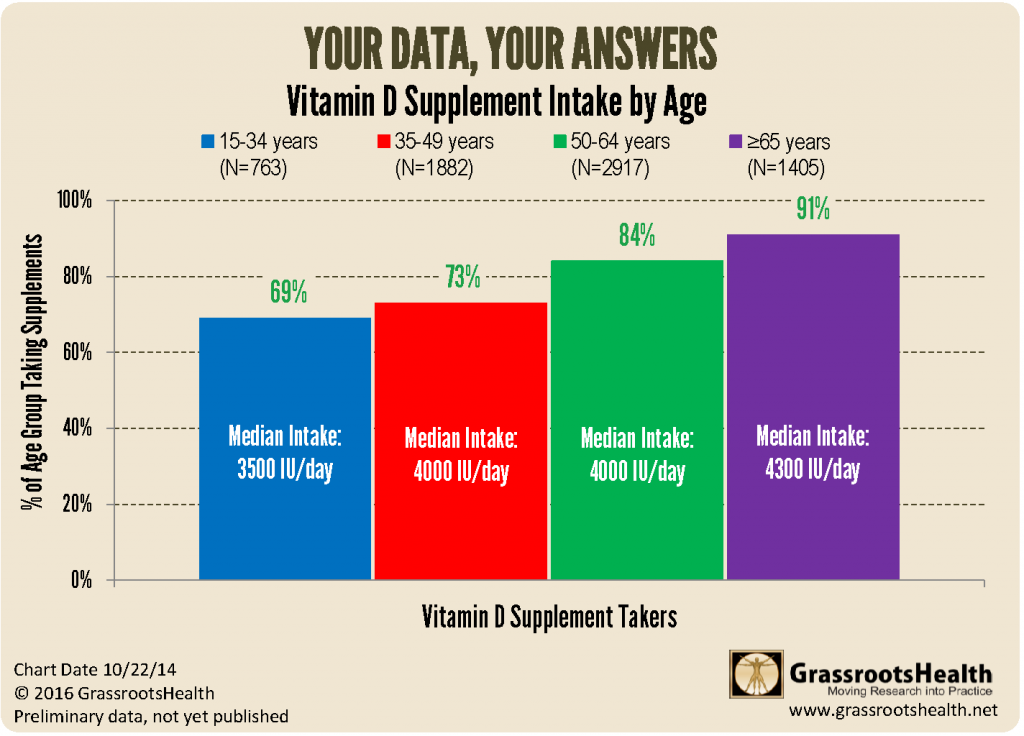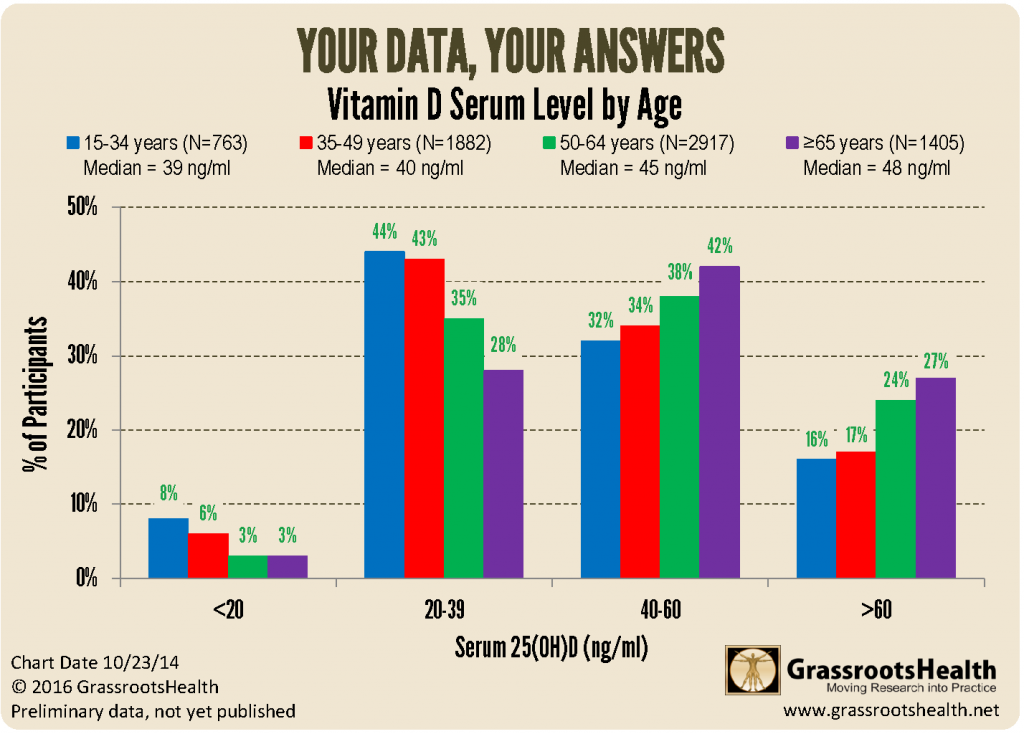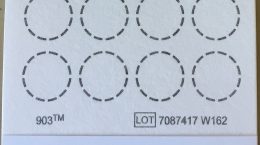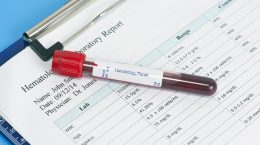Published on February 15, 2019

 In today’s blog, we revisit a previous analysis of the D*action cohort for more of Your Data, Your Answers. We analyze the data many different ways, and this month we wanted to show you how your vitamin D replete community looks with respect to age. How do the different age groups supplement? Are there differences in serum level by age?
In today’s blog, we revisit a previous analysis of the D*action cohort for more of Your Data, Your Answers. We analyze the data many different ways, and this month we wanted to show you how your vitamin D replete community looks with respect to age. How do the different age groups supplement? Are there differences in serum level by age?
How old is everyone in the D*action cohort?
When this analysis was done, the D*action study cohort consisted of over 7,800 members who had completed at least one questionnaire and blood test. The median age of D*action participants was 54 years old. For this analysis we divided the group into the following age ranges:
- 15-34 – sample size is 763, 11%
- 35-49 – sample size is 1882, 27%
- 50-64 – sample size is 2917, 42%
- 65 or greater – sample size is 1405, 20%
Intake by Age
In the chart below, you can see that as age increased, so did the percentage of those taking supplements. You can also see that the median vitamin D intake also increased with age.

Serum Level by Age
This next chart shows that the median serum level of vitamin D (25(OH)D) increased with age. If you look at the blue bars representing the youngest age group (ages 15 – 34), you can see that more of that group was in the lower serum level ranges, <20 or 20-39 ng/ml than any other age group. You can also see that those in the oldest age group (ages 65+), represented by the purple bars, were more likely to be in the higher serum level ranges of 40-60 or >60 ng/ml than any other age group.
We found no difference in the dose response relationship by age; as supplement intake increased, serum level increased, regardless of age. Rather than thinking that someone might need to take more supplements as they age, perhaps we should instead think that people should start with supplements at a younger age and continue so that they can have a long, healthy lifetime with their 25(OH)D level in the recommended range of 40-60 ng/ml.

Conclusion – Supplements are Important at Any Age
Regardless of age, those participants in our D*action group who reached the recommended level of 40-60 ng/ml took an average of 4000 IU daily. This dosage can be used as a baseline, but remember to test your blood regularly to make sure you are in the recommended range because individual requirements do vary.
How can I track my vitamin D level and health?
To help you track your nutrient levels and health outcomes, GrassrootsHealth has created an online tracking system called myData-myAnswers. You can track details about your supplement use and nutrient levels. You can also track many pre-set health conditions, such as cognitive function, or add your own custom trackers. This will help you discover how your nutrient levels impact your health. Check it out today!

Order a Vitamin D test today!
10% off vitamin D test kits, good through 2/22/19.
Coupon code D4Health






